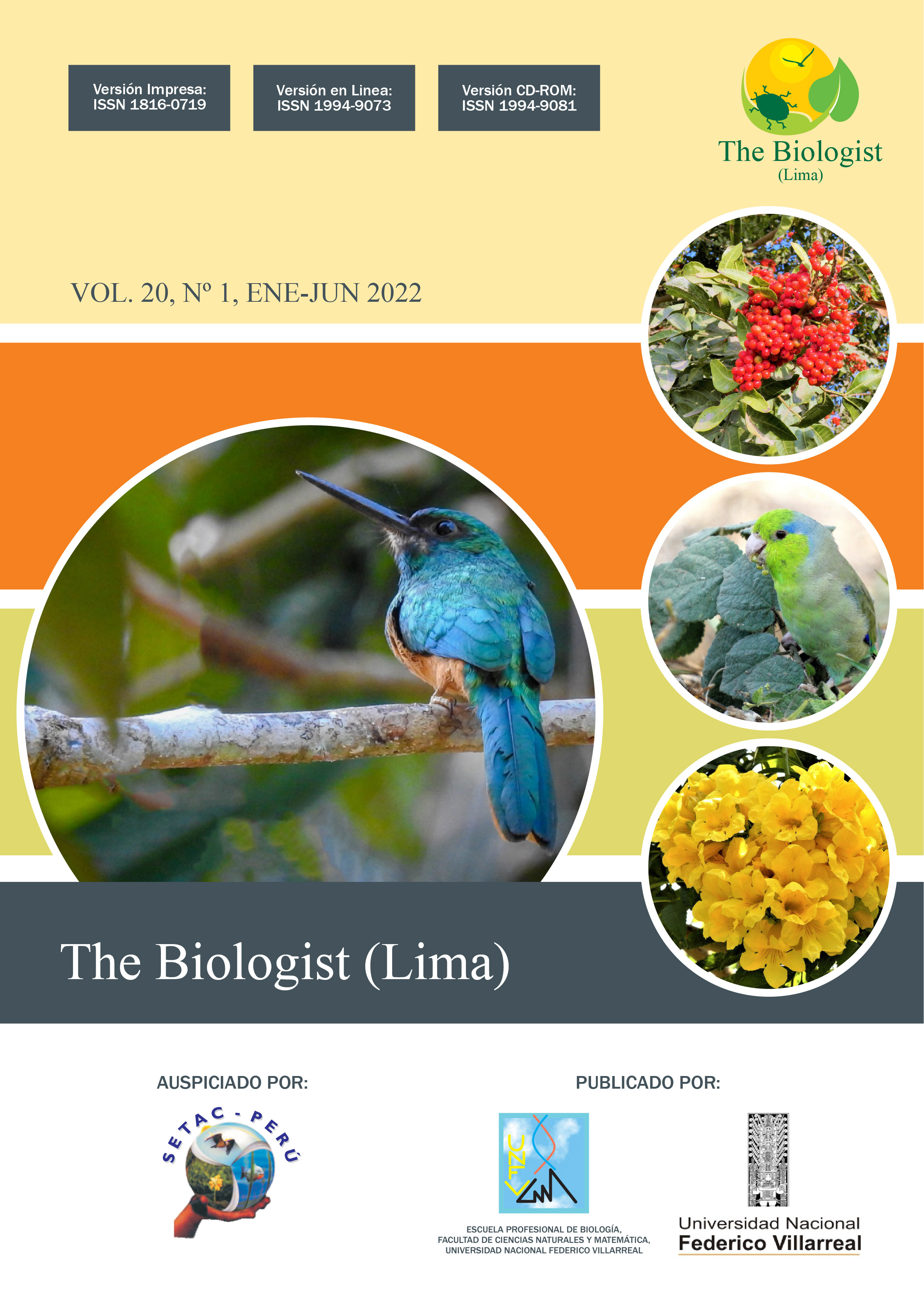EFFECTS OF LIVE AND MICROENCAPSULATED FOOD ON THE GROWTH AND SURVIVAL OF COLOSSOMA MACROPOMUM CUVIER, 1816 (CHARACIFORMES, SERRASALMIDAE) POSTLARVAE
DOI:
https://doi.org/10.24039/rtb20222011222Keywords:
Colossoma macropomum, gamitana, microencapsulated, postlarvaeAbstract
In aquaculture, the survival of fish postlarvae is influenced by food. The gamitana, Colossoma macropomum Cuvier, 1816, is a species of great economic importance in our country. In the present work, the growth of gamitana C. macropomum postlarvae was evaluated, subjected to three feeding treatments: T1, live food composed of brine shrimp nauplii; T2, food composed of brine shrimp nauplii plus microencapsulated experimental food and T3, only microencapsulated experimental food. Food was provided "ad libitum" and postlarvae growth, specific growth rate, weight gain and survival rate were evaluated. The microencapsulated food was prepared by the gelling, drying and grinding technique. The experiment lasted 30 days. 450 gamitana postlarvae with initial average size of 0.02 ± 0.012 cm distributed in nine aquariums were used. The experimental design was completely randomized with three treatments and three replications per treatment. The results showed significant differences between the treatments for weight gain (g), the specific growth rate (%) and survival (%). For T : 1.25 g; 13.93% and 1 70.66%; for T : 1.38 g; 14.23% and 78%; for T : 0.83 g; 13.48% and 56.66%, respectively. The water 2 3 quality parameters were within the appropriate ranges for the species. It is concluded that the best yields were obtained with the T2 treatment, brine shrimp nauplii plus microencapsulated food.
Downloads
Published
How to Cite
Issue
Section
License

This work is licensed under a Creative Commons Attribution-NonCommercial-NoDerivatives 4.0 International License.
Objeto: El AUTOR-CEDENTE transfiere de manera TOTAL Y SIN LIMITACIÓN alguna al CESIONARIO (Revista The Biologist (Lima)) los derechos patrimoniales que le corresponden sobre sus obras por el tiempo que establezca la ley internacional. En virtud de lo anterior, se entiende que el CESIONARIO adquiere el derecho de reproducción en todas sus modalidades, incluso para inclusión audiovisual; el derecho de transformación o adaptación, comunicación pública, traducción, distribución y, en general, cualquier tipo de explotación que de las obras se pueda realizar por cualquier medio conocido o por conocer en el territorio nacional o internacional.
Remuneración: La cesión de los derechos patrimoniales de autor que mediante este contrato se hace será a título gratuito.
Condiciones y legitimidad de los derechos: El AUTOR-CEDENTE garantiza que es propietario integral de los derechos de explotación de la(s) obra(s) y en consecuencia garantiza que puede contratar y transferir los derechos aquí cedidos sin ningún tipo de limitación por no tener ningún tipo de gravamen, limitación o disposición. En todo caso, responderá por cualquier reclamo que en materia de derecho de autor se pueda presentar, exonerando de cualquier responsabilidad al CESIONARIO.
Licencia de acceso abierto: El AUTOR-CEDENTE autoriza que manuscrito publicado en la Revista Científica The Biologist (Lima) (versión Impresa ISSN 1816-0719, versión en línea ISSN 1994-9073) permanece disponible para su consulta pública en el sitio web http://revistas.unfv.edu.pe/index.php/rtb/index y en los diferentes sistemas de indexación y bases de datos en las que la revista tiene visibilidad, bajo la licencia Creative Commons, en la modalidad Reconocimiento-No comercial- Sin Trabajos derivados –aprobada en Perú, y por lo tanto son de acceso abierto. De ahí que los autores dan, sin derecho a retribución económica, a la Escuela Profesional de Biología, Facultad de Ciencias Naturales y Matemática de la Universidad Nacional Federico Villarreal (EPB - FCCNM - UNFV), los derechos de autor para la edición y reproducción a través de diferentes medios de difusión.









































